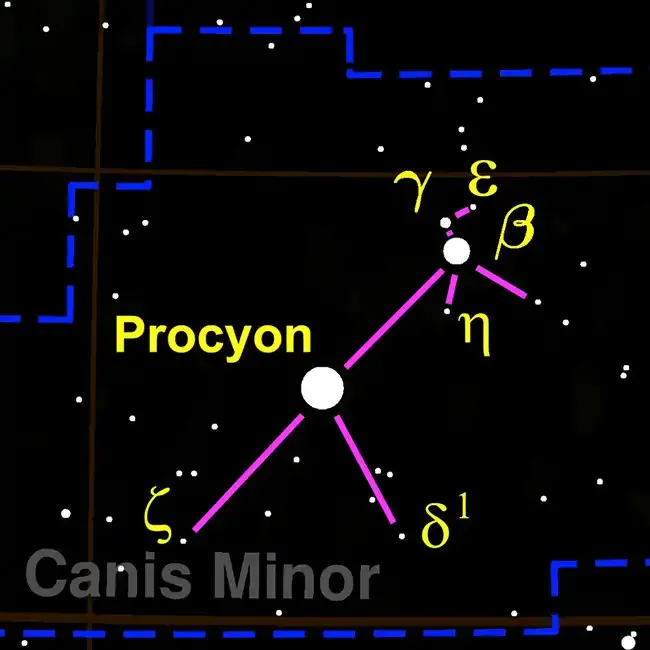
Canis Minor is a small constellation in the northern sky, representing one of the two dogs of Orion, the hunter. Despite its size, it is a well-known constellation due to its bright primary star, Procyon. Canis Minor is Latin for "Lesser Dog," and it is often depicted as following its larger counterpart, Canis Major, across the night sky.
Key Features
Canis Minor is one of the 88 modern constellations recognized by the International Astronomical Union. It is a small constellation, covering an area of just 183 square degrees, making it the 71st largest constellation in the sky. It contains only two stars of significant brightness, Procyon and Gomeisa.
Mythology
In Greek mythology, Canis Minor is associated with one of Orion's hunting dogs. There are various stories about this constellation, but it is often linked with the tale of the Teumessian fox, a beast that could never be caught. Canis Minor is depicted as one of the hounds set to catch the fox, alongside its companion, Canis Major.
Notable Stars
- Procyon (Alpha Canis Minoris): Procyon is the brightest star in Canis Minor and the eighth-brightest star in the night sky. It is part of the Winter Triangle, along with Sirius in Canis Major and Betelgeuse in Orion. Procyon is a binary star system composed of a white main-sequence star and a faint white dwarf companion.
- Gomeisa (Beta Canis Minoris): Gomeisa is the second brightest star in the constellation. It is a blue-white star, and although not as bright as Procyon, it is still easily visible to the naked eye.
Visibility
Canis Minor is visible in both the Northern and Southern Hemispheres. In the Northern Hemisphere, it is best observed during the winter months, particularly in February. The constellation can be seen between latitudes 90° and -75°, making it visible to most of the world's population.
Tips for Observing
Canis Minor is easy to spot due to its proximity to Orion and Canis Major. Look for the bright star Procyon, which is part of the Winter Triangle. Using Orion's Belt as a reference, you can trace an imaginary line southeast to find Procyon. The constellation itself is small, and its two main stars are the key markers. To observe Canis Minor in its entirety, a dark sky away from city lights is recommended.
